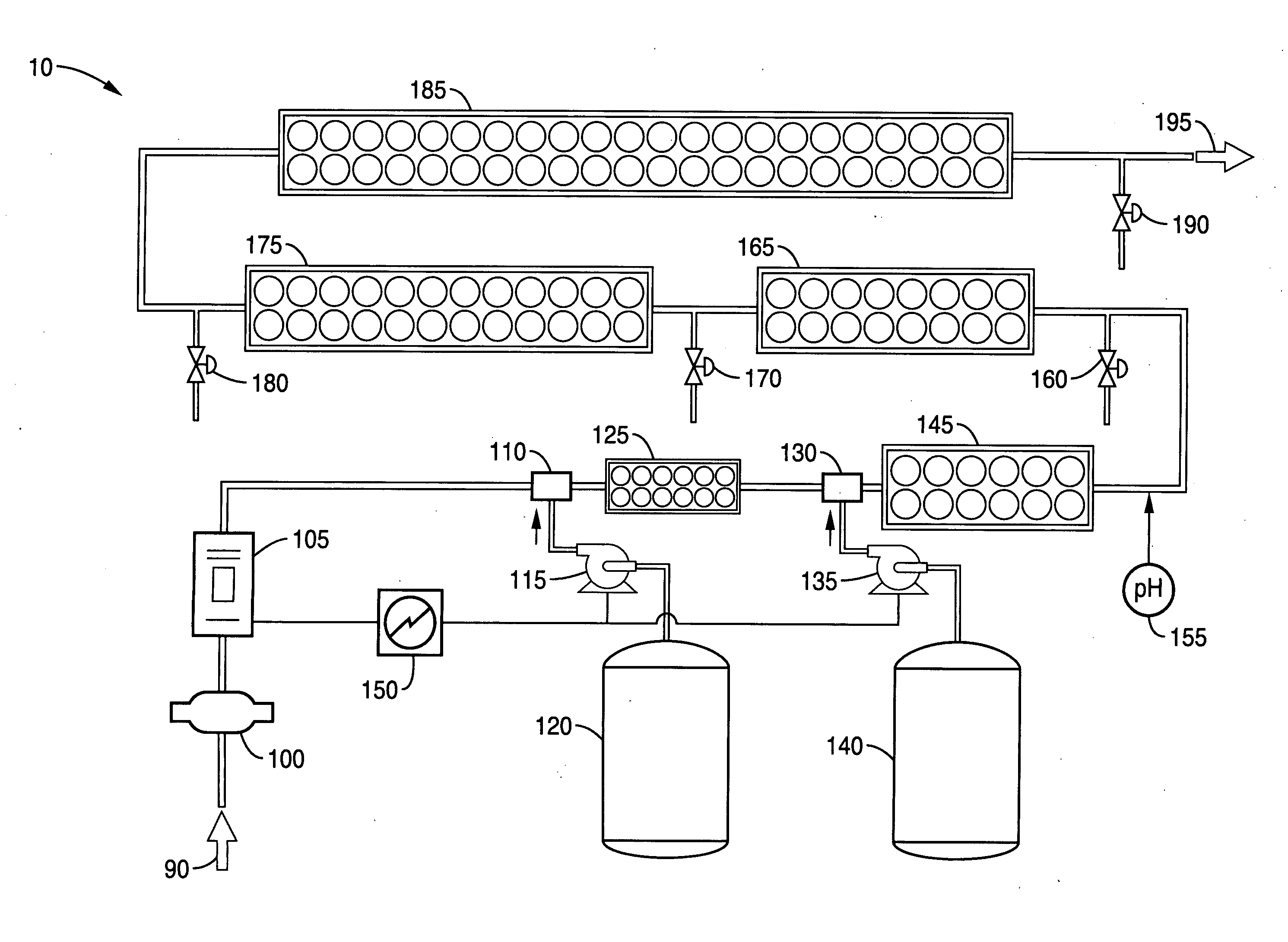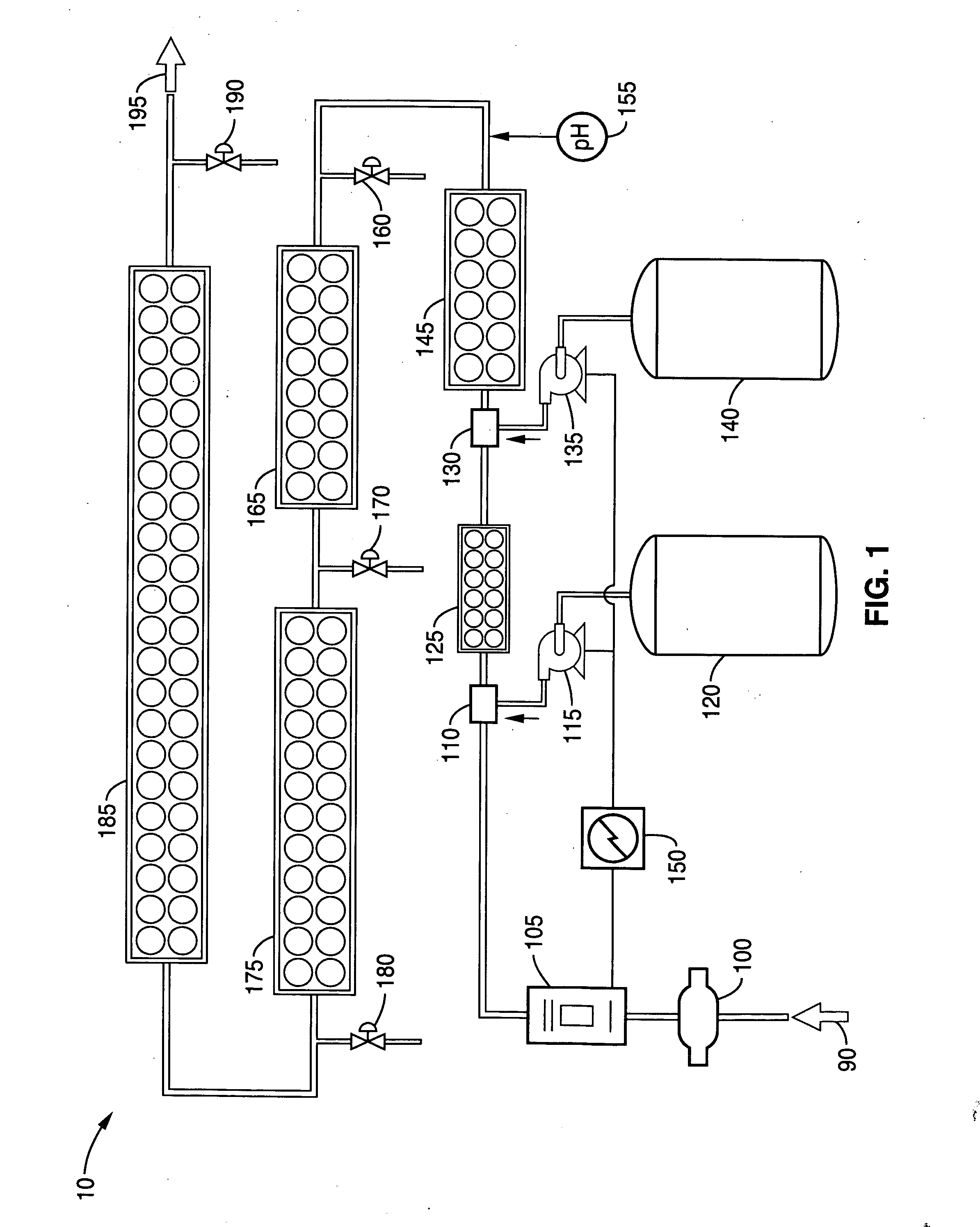Methods and compositions for the generation of peracetic acid on site at the point-of-use
a technology of peracetic acid and peracetic acid, which is applied in the direction of biocide, detergent compounding agent, chemical process, etc., can solve the problems of inefficient use of hydrogen peroxide and acetic acid products, increase transportation and handling costs, and find captive use, etc., to achieve the effect of convenient operation, low cost and quick conversion
- Summary
- Abstract
- Description
- Claims
- Application Information
AI Technical Summary
Benefits of technology
Problems solved by technology
Method used
Image
Examples
example 1
[0047]Triacetin (83.05 g) was added to 50% hydrogen peroxide solution (75 g) to form 158.05 g of a mixture. There was no evolution of gas indicating the hydrogen peroxide had decomposed to oxygen, nor was there any exotherm indicating that a chemical reaction had occurred. The solution did not turn oily or cloudy but remained clear. The solution was calculated to comprise 23.73% hydrogen peroxide and 52.55% triacetin, with the balance being water, and had a measured pH of 2.2. The mole ratio of hydrogen peroxide to triacetin was calculated to be 2.98:1. Titration of the solution immediately upon preparation yielded 24.1% hydrogen peroxide, which is within experimental error of the calculated amount of hydrogen peroxide.
[0048]This experiment showed that triacetin is remarkably soluble in 50% hydrogen peroxide. The solubility of triacetin was found to be at least 52.55%. This is surprising, given that the solubility of triacetin in water is only 7% at 25° C.
[0049]In order to test the ...
example 2
[0051]A formulation containing hydrogen peroxide and triacetin in a mole ratio of 12.84:1 was prepared by adding triacetin (100.0 g) to 50% hydrogen peroxide (400.0 g) so that the mixture was 40% hydrogen peroxide and 20% triacetin, with the balance being water. The pH of the solution was 1.46 and the pH of a 1:100 dilution was 3.69. To accelerate storage characteristics, the sample was placed in an incubator set for 86-87° F. Table II shows the percent of hydrogen peroxide remaining and the percent of PAA generated over a period of more than six months.
TABLE II% Hydrogen Peroxide% PAADays of StudyRemainingGenerated140.210.0043338.023.4995435.55.9929629.278.3612725.056.6617318.494.4320115.673.51
[0052]Table II indicates that after 96 days, the generation of PAA maximized at 8.36% and corresponded to a loss of 10.94% hydrogen peroxide. Had all of the depleted hydrogen peroxide gone toward the generation of PAA, 24.45% PAA would have been generated. Because only 8.36% PAA was generated...
example 3
[0053]A formulation containing hydrogen peroxide and triacetin in a mole ratio of 5.8:1 was prepared by adding triacetin (37.5008 g) to 50% hydrogen peroxide (65.2504 g) so that the mixture was 31.75% hydrogen peroxide and 36.5% triacetin, with the balance being water. The pH of the solution was 1.57 and the pH of a 1:100 dilution was 5.17. To accelerate degradation, the sample was placed in an incubator set for 86-87° F. Table III shows the percent of hydrogen peroxide remaining and the percent of PAA generated over a period of six days.
TABLE III% Hydrogen Peroxide% PAADays of StudyRemainingGenerated131.720.33631.630.716
[0054]In this study, after six days, the mixture had lost only 0.09% hydrogen peroxide, yet had generated an additional 0.386% PAA. Had all the loss of hydrogen peroxide been due to the formation of PAA, only an additional 0.201% would have been generated. It is clear that the analytical methods employed for solutions that are high in hydrogen peroxide but low in PA...
PUM
| Property | Measurement | Unit |
|---|---|---|
| time | aaaaa | aaaaa |
| concentration | aaaaa | aaaaa |
| residence time | aaaaa | aaaaa |
Abstract
Description
Claims
Application Information
 Login to View More
Login to View More - R&D
- Intellectual Property
- Life Sciences
- Materials
- Tech Scout
- Unparalleled Data Quality
- Higher Quality Content
- 60% Fewer Hallucinations
Browse by: Latest US Patents, China's latest patents, Technical Efficacy Thesaurus, Application Domain, Technology Topic, Popular Technical Reports.
© 2025 PatSnap. All rights reserved.Legal|Privacy policy|Modern Slavery Act Transparency Statement|Sitemap|About US| Contact US: help@patsnap.com



